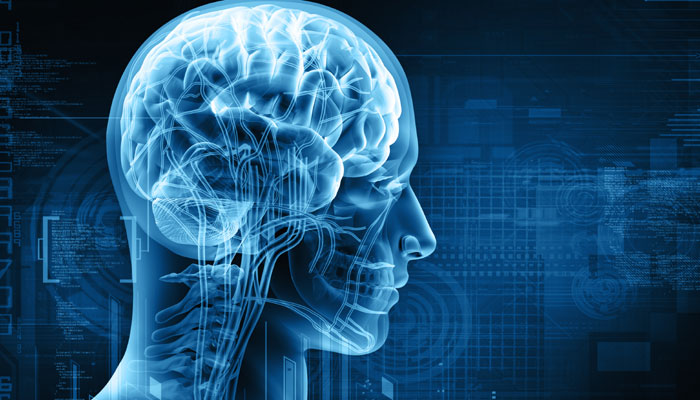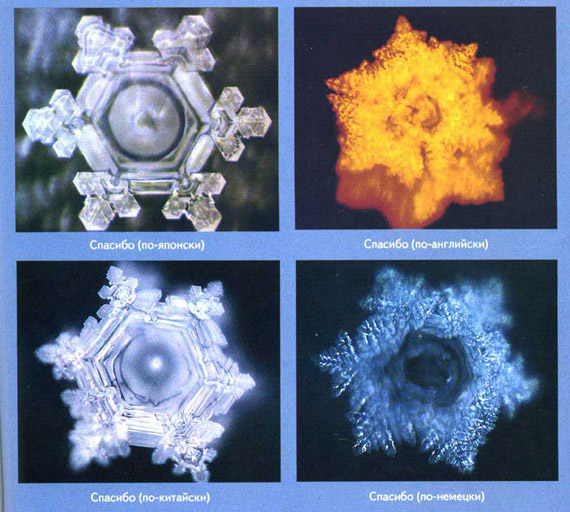The opinion of psychologists about tattoos. Why do people tattoo psychology
Passion for tattoos and piercings has a sacred origin: pagan tribes from different regions for many centuries used war paints, decorated their bodies with symbols that signified their path of life and spiritual development.
However, nowadays tattoos and piercings most often cause social disagreement. As a rule, young people are of the opinion that tattoos and piercings symbolize freedom, which, in their opinion, is so lacking in modern humanity. Representatives of the older generation most often oppose such hobbies, considering it a crime to "dirty their bodies" with incomprehensible hieroglyphs, drawings and pieces of iron.
Some psychologists are of the opinion that tattoos and piercings can repel some people, as they are associated with a risky attitude to life. Probably for some, having a tattoo or a bead piercing a lip may mean something that goes beyond social prohibitions.
In addition, experts from the University of South Brittany (France) found out that tattoos and piercings are often addicted to adolescents and people who abuse alcohol, are addicted to drugs. Scientists conducted an experiment: every teenager leaving a nightclub was asked to take a test with a breathalyzer.
As a result, it turned out that almost every teenager with a high blood alcohol content had one or more tattoos, as well as pierced earrings on his body. Thus, psychologists have established a connection between addiction to alcoholic beverages and a passion for tattoo piercings.
Also, scientists from the University of Quebec (Canada) learned that almost 80 percent of girls who have tattoos and piercings on their bodies had experience of risky behavior, often showed themselves too aggressively, and were often caught while taking drugs. As for young people with tattoos and piercings, among them there were many who were addicted to computer games, often broke the law and was also drug addicted.
Such experiments once again explain why so many prejudices are born about tattoos and piercings. Of course, not all owners of tattoos are prone to risky behavior, but statistics confirm that the number of asocial adolescents with tattoos is very high.
 Tattoo as a carrier of information about a person. Initially, the tattoo was used as a symbol, embodying a certain inner mood of a person or his goal, which he has long been striving for. Often tattoos serve as “marks” that mean a person’s specific life achievements.
Tattoo as a carrier of information about a person. Initially, the tattoo was used as a symbol, embodying a certain inner mood of a person or his goal, which he has long been striving for. Often tattoos serve as “marks” that mean a person’s specific life achievements.
Tattoo as a stylish decoration. Recent years, tattoos in most cases do not have any special meaning and are used as decoration. Sometimes tattoos and piercings become a sign of masculinity, courage, a hard character and “steel nerves”.
Student Andrzej Rinatti from Palermo told her psychotherapist who helped her to restore relationships with her relatives and get rid of the desire to constantly get tattoos: “My boyfriend is fond of motorcycles, and I always wanted to be as cool as he is,” the student shared her thoughts with a psychologist. - As it always seemed to me, I clearly lacked brutality to fully comply with the lifestyle of my boyfriend. That's why I decided to get a tattoo and piercing. Now I have 12 tattoos and more than 5 punctures for earrings on my body. ”
Tattoo as a way of self-expression. Someone uses tattoos and piercings to express their personality, unless they find another way to do this.
“I was 16 when I got my first tattoo,” says DJ Mike Gamble from New Jersey. “After that, there were other tattoos and a lot of piercings. My parents, of course, constantly condemned me, because of which I once broke off relations with them. "I believe that everyone has the right to express themselves as they want. My expression is music and tattoos."
What do psychologists say about people who are fond of tattoos and piercings? If the desire to get a tattoo is not connected with the desire to comply with new-fangled trends, then in most cases it can be caused by the desire to stand out from the gray crowd, to show their significance, individuality, originality.
In such a situation, parents just need to be patient and wait for the time when their teenager “outgrows” this hobby. It is better for adolescents themselves to pay more attention to their internal development, to learn other ways of self-expression. Creativity, the ability to do something on your own with your own hands is much better than a tattoo.
Also, you can always try to convince a teenager. Explain to your child that tattoos and piercings require special constant care and adherence to special rules (for example, for prolonged exposure to the sun, the tattoo must be carefully coated with sunscreen, and piercing earrings must be changed and washed regularly). Teens usually do not like the rules, and perhaps your son or daughter will think more than once about whether to get a tattoo.
If your child positions himself as a representative of a subcultural movement, tries to stand out from the crowd and become unusual with tattoos and piercings, but you are seriously worried about his health and future, contact a psychologist and ask question to the consultant on our website.
Let's see why people want to color their body, become brighter, somehow stand out from the crowd, so to speak. What are the subconscious motives behind these desires? In search of an answer to this question, I decided to turn to mother of our nature and she prompted me the answer.
This is the first part of articles on the effect of tattoos on the human psyche, in which I will touch on and analyze the influence of basic instincts. So to speak, Darwin's analysis. So, let's begin. First you need to answer the first, superficial series of questions about why a person makes a tattoo:
- desire to stand out
- desire to become brighter
- desire to raise social status
- desire to hide the imperfections of your body
- desire to look more brutal and aggressive (awesome tattoos)
- magical aspect (drawing amulets and signs to attract good luck)
- a desire to capture a memory of events or a relationship with other people
- desire to be trendy.
- protest
- Desire to indicate status - hierarchical (often prison tattoos)
In the animal world
Of course, this is not the whole list of reasons, but for now this is enough. In this part of the article, I will touch on the desire to stand out, raise my status, become brighter and more attractive. These desires are clear and simple, but why can a tattoo satisfy them? Everything is very simple. The fact is that in nature, color is given great importance. Color indication allows you to accurately determine the hierarchy in the pack. It so happened that more successful individuals, and especially this is seen in males, have a brighter color. Here compare two baboons.

Is it necessary to explain which of them is alpha and which is omega? I think you yourself will guess. So, we immediately determined the status of these males due to their color. As you can see, more successful individuals look noticeably brighter and richer.
In the world of people
 Do you think people have a different way? People have more troubles, but at a basic level, it is instincts that determine our behavior. Therefore, when we see a person with good, expensive tattoos, we will not pay attention to him by will. Why do we pay attention to him? Everything is simple - signals are sent to the brain - or danger (for men) - a brighter individual is nearby, and submission hormones are secreted.
Do you think people have a different way? People have more troubles, but at a basic level, it is instincts that determine our behavior. Therefore, when we see a person with good, expensive tattoos, we will not pay attention to him by will. Why do we pay attention to him? Everything is simple - signals are sent to the brain - or danger (for men) - a brighter individual is nearby, and submission hormones are secreted.
And now, your opponent is already at a subconscious level of you afraid and respected. In the case of the opposite sex, attention is attracted for another reason - a bright individual nearby - libido increases due to the desire to mate with a more dominant male or. So simple. In nature, in general, everything is simple and ingenious. Bright color is a sign of good hormonal background, excellent health and psychological stability.
findings
Now you understand why it costs. An expensive, beautiful and large tattoo helps you live, as well as good clothes. By the way, about clothes. Yes, she also plays the exact same role, but! Tattoo makes it a lot stronger. Since our brain has long been accustomed to the fact that clothes are not the person himself, you never know what he has fastened, but with a tattoo it’s more difficult - the brain understands that this color is on his skin! Do you understand what I mean?
In the next part of articles on this topic I will talk about the size and proportional placement of tattoos, to maximize their psychological effect.

You can talk about dependence if a person experiences a strong, irresistible desire that prevents him from leading a normal life. Tattoo is, first of all, art. And any art, from cooking to literary creation, makes our life more beautiful and meaningful. Tattoos attract the attention of others, which increases our self-esteem. We are proud to share this beauty with them.
But the problem is that any work of art is imperfect, and its charm is not infinite. Time passes, and the tattoo becomes familiar to both ourselves and others. In addition, the fashion is changing. If last year everyone pricked hieroglyphs, today, for example, flowers can be in fashion.
It is even sadder if a tattoo with the name of a former partner regularly reminds us of parting. It also happens that people just get bored of their tattoos, which no longer correspond to their outlook on life.
The easiest way to feel joy again and arouse admiration of others is to make a new tattoo
One way or another, at some point the tattoo ceases to please. She becomes indifferent to us or causes negative emotions. But we remember the inspiration we felt when we first made it, and we want to experience these emotions again. The easiest way to feel joy and delight others is to get a new tattoo. And then one more - and so on until there are no empty spots on the body.
Such a dependence, as a rule, arises in people who perceive beauty as something tangible, and not as an emotional experience. They easily fall into dependence on the opinions of others, fashion and other external factors.

Some believe that during the process of tattooing, the level of endorphin and adrenaline rises in the body, which means that neurophysiology influences their choice. However, much depends on the person himself. Different people perceive the same events differently. For some people, a visit to the dentist is a common thing, while for others it is a tragedy.
Sometimes people get tattoos to feel pain. Suffering makes their impressions stronger and more meaningful. For example, Shiite Muslims or medieval saints deliberately stigmatized themselves, and Christians sang the crucifixion torment. You don’t have to go so far as examples and remember that your friend regularly waxes her bikini area because she believes that it enhances her sexual pleasure.
Perhaps you consider the tattoo procedure a proof of your own courage. This experience is very valuable for you, as long as you remember the pain, while others pay attention to the tattoo. Gradually, the memories become less vivid, and the significance of the tattoo is reduced.
In pursuit of fashion, we get cliched beauty and monotonous art
about the author
Kirby Farrell - Psychologist, teacher at the University of Massachusetts, author of several books, including The Psychology of Abandonment (The Psychology of Abandon, Levellers Press, 2016).
Do I like tattoos? I don’t feel much passion and fanaticism for them. Although, I admit, in my teens I had a desire to make some kind of small tattoo ... But she changed her mind ... I have a girlfriend ... So she has tattoos all over her body! And her husband, too.
Tattoo (French tatouer - to tattoo, from the English tattoo; primary source - Polynesian), drawing drawings on the body by introducing dyes under the skin.
There is also a version that the word "tattoo" comes from the Tahitian "tatau" and the Marquesan "ta-tu", which means "wound", "sign", brought to Europe by James Cook in the 18th century, but did not immediately take root in everyday life, since each nation had its own meaning and purpose for this sign.
If we talk about when exactly the art of tattooing
(drawing a picture on the body), there is no exact date for the appearance of this art, as tattoo experts call it.
It is known that some mummies found during excavations in Egypt have traces of tattoos. And the age of these mummies totals about 4000 years.
To earlier historical confirmations that people applied drawings to their bodies, especially in cases when circumstances such as ceremonial holidays, hunting, battles required it, date back to an even later period, the times of primitive society.
Ancient historians and researchers Herodotus and Hippocrates in their writings note the presence of distinctive drawings and scars on the bodies of representatives of European tribes, which were both distinctive and ceremonial in nature.
Tattoo often seems to us something ultramodern and youth. But in fact, tattooing is one of the oldest trends in the visual arts. It is in art, contrary to the popular belief that< татуировка > - This is an asocial label, which is a distinctive feature of people who have been to places of detention.
In ancient times, tattoos reflected the affiliation of people to a special group, such as warriors, or the position in the family, as in Japanese nationalities.
But due to the church ban, tattoos in medieval Europe practically did not develop. The revival of this art occurred only in modern times.
What other functions did the tattoo perform?
The stigma of soldiers, slaves and criminals.
Central Europe - cheaters got a sign in the form of a hexagon.
Poachers were marked with horns.
Convicted to galleys - the inscription "GAL".
Life sentenced to correctional labor - "TFP".
In ancient Rome, all soldiers were marked with this sign according to the rank and belonging to the unit in which they served.
In Russia, they stigmatized slaves, sent the letters "KT" to the exiled to Siberia, and during the reign of Ivan the Terrible, the letter "B" was burned to the guilty on the forehead.
An important date in the history of tattoos is the year 1891, when the electric tattoo machine was invented. However, during the first half of the 20th century, the art of tattooing did not practically develop. A turning point occurred in the 60s with the development of countercultural youth movements, which returned the tattoo to its deserved position as one of the forms of fine art. From this period, on the basis of ancient Eastern and European styles, modern styles begin to form.
Today, the tattoo industry is developing at an unprecedented pace, tattoo shops and art studios are opening everywhere.
TYPES OF TATTOOS.
There are two types of tattoos: visible, applied to exposed parts of the body, such as the hands, face and neck, and hidden, applied to other parts of the body.
PURPOSE OF TATTOOS.
Visible tattoos have two goals. They are achieved jointly, regardless of whether their owner is pursuing them or not. The first goal is social adjustment. A person, through a certain symbol or pattern, changes the attitude of society towards himself. The second is a change in their behavior, their self-expression in relation to this society. By society we mean everything indiscriminately.
Hidden - the goal of such tattoos is to influence a narrow circle of people. With those who are happy and with those who may be near. First of all, a person corrects his behavior and expression of his actions in relation to relatives, friends and acquaintances.
Moreover, this does not mean at all that a person applying a tattoo on hidden parts of the body actually implies a direct influence of the drawing on the circle of the chosen ones, but his mood and his attitude will certainly be changed by himself.
Psychological aspects of tattooing.
The art of decorating oneself can be considered one of the oldest. With the help of clothes, accessories, make-up, hairstyles, a person seeks to stand out from his surroundings, express himself, draw attention to himself. Tattooing is one way of expressing the inner self.
According to statistics, most often< татуировку > do people with big ambitions. Maybe that’s why among the owners< татуировки > so many creative people - singers, actors, musicians.
Any art affects the psychological state of a person, and such an unconventional type of painting as painting on his own body, especially.
And first of all, this effect is important for those who decide to decorate themselves with some kind of plot. After all, a person must cross a certain “barrier” in order to decide to do this. Of course, the motivation for such a step is different for everyone, but there is one, and everyone should realize for themselves the real reason that prompted them to decorate their body.
On the other hand, man is a social being. And each with its appearance has a certain effect on others. This is the other side of the psychological aspect of the art of body tattooing.
It is necessary to be guided not only by a passing passion for tattoo, its aesthetic side, but to approach it with knowledge of all its aspects.
The psychological aspect of tattooing the body is closely related to the motive of imitation or false aesthetic motives. In some cases, a tattoo can provoke a phenomenon reflected by it. Well, if it is done consciously with a complete understanding of the essence and purpose, then the tattoo becomes a kind of calling card, somehow securing a certain image for the person, not allowing the owner to abandon him or forget the criminal experience.
Aggressive tattoo constantly reminds its owner: I am angry, I hate their world. The worst thing is that in normal life, a person is not able to even for a short time cross the barrier with which he surrounded himself. To a certain extent, the process of tattooing is part of the mechanism of zombies, turning a person into a carrier of someone else's will, and renouncing his own. In short, a tattoo is not a passive image - it is an active symbol, but acting not at the behest of its owner. True, the owner is not the owner at all, he is only the bearer of the will of others, although he sincerely believes that it is his own.
The author of the drawing applied to the body projects a feature of his inner world onto it. In this regard, it is similarly concluded that the subject who chooses this or that image, unknowingly offers the option that indicates the features of its development.
A tattoo is a kind of indicator of a person’s character (unless they are forced to force him and trick him or her).
American psychologist K. Mahover analyzed personality characteristics and the level of development of the painter and the nature of the applied images. As a result, the following trends and patterns were identified. Here are some of them:
Face
- carefully drawn - preoccupation with relationships with others, their appearance.
Nose
- interpreted as a sexual symbol, but this is controversial.
the running Man
- the desire to run away, take refuge, dodge; measuredly walking - balanced.
Eyes
- hats closed or hidden under the fields are evidence of a strong desire to avoid unpleasant visual effects. Big, wide eyes - anxiety, anxiety, the need for protection.
Limbs
- arms, legs - a function of the impact on the world. Muscular arms - perhaps the need for physical strength, agility. Legs - support in activity: widely spaced legs - dictate, self-confidence.
Mouth
- a symbol of aggressiveness. A special sign of aggression is clearly traced teeth. A mouth like a clown’s - forced friendliness. A character without a mouth or a “dash” mouth does not have the ability to verbally influence other people.
Torso
- vitality. Large body - acutely recognized need, dissatisfaction; small - symptoms of humiliation.
Thus, in some cases, one can characterize a person’s personality by the type of depicted drawings on his body. For example, a person who, at first glance, is very modest and calm, has a number of aggressive tattoos. What does it mean? As an option - hidden strong aggression against society, or directed against the female sex (depending on the nature of the tattoo). But most likely - this is a person who seeks to compensate with aggressive images for his insecurity and weakness. Therefore, tattoos should be considered in a general context, taking into account all the details and features. Applying a tattoo on the body, the meaning of which has a certain meaning, indicates the loss of one's own personality and its replacement with pseudo-identity.
Another example: the body and hands are painted with dragons. Most likely this is a type of personality, craving for something special. Since his dragons are nothing more than a desire to stand out, to personify in this way. Ready to accept any idea in return for the promise of exciting life or exciting events. Constantly striving for new sensations, optimistic about the future, burdened by loneliness, striving for power. But if dragons on the body are adjacent, for example, to Raphael's “Sistine Madonna” on the thigh or to some other pattern that falls out of the logical series, then you may have a real hysterical type. He makes utopian plans, is condescending towards friends, seeks self-affirmation, but in a slightly different, “exotic” form. He should not be a leader, if only for a short time, until the first difficulties.
When applying this or that image, it should be borne in mind that in addition to the first, lying on the surface explanation of a particular drawing, meaning, there is a second, deep, explaining it on a spiritual and religious level. Character Relationship< татуировок > with these interpretations will provide an opportunity to look into the soul of the drawing, to clarify its true meaning.
Where is the tattoo located? The psychological interpretation.
Head
External influence - The desire to gain significance and weight in society. Internal Influence - The development of hidden abilities and capabilities. The danger is that the discovery of these abilities is in no way controlled by man. This is a spontaneous release.
Neck
External influence - Demonstration that a person is endowed with something that is inaccessible to others. Considers himself a carrier of the hidden and important for him. Internal influence - Internal tension, inability and inability to cope with what is happening in his life.
Left hand (for right handed)
External influence - A clear description of their aspirations and interests from the people around him and processes. As if the motto is "I want or I like this." Internal influence - One-sidedness and a small number of options when making decisions or committing actions. Stereotype and cliché in schemes.
Rights hand (for right-hander)
External influence - Active desire for self-expression. The desire to get more and often something specific from the world. Internal influence - Firmness and decisiveness, coupled with excessive perseverance and lack of flexibility.
Chest
External influence - Challenge to others, unwillingness to follow social standards, and a desire to establish their own rules. Internal influence - A conflict in the worldview between one’s vision and social norms. As a result - isolation and inactivity.
Stomach
External influence - Concretization of interests and material aspirations in life. What man directs his desire in communication. Internal influence - Limited contact. The impossibility and inability of communication in the broader sense of the word. Some of the acquaintances will be eliminated.
Back
External influence - Demonstration of dominance and the presence of internal protection from the environment. Internal influence - A constant desire to express their capabilities, to demonstrate their potential to others.
Loin
External influence - Eccentricity in communication and approaches related to contacts with the opposite sex. Internal Influence - Doubt and unfulfillment in an existing partner. The desire to make and receive from life more than is available.
Buttocks
External influence - The desire to get the maximum ..
Why do people get tattoos?Many people wonder why a person decides to put on his body a drawing that will remain for life. Is this picture boring him? Why is he willing to endure pain? What drives them if you can make at least a hundred temporary tattoos without risking anything?
Proponents and opponents of tattoos have always faced the most desperate debate. Many are convinced that tattoos are nothing more than a tribute to fashion, that they contradict many religious beliefs. However, tattoo lovers have always done and will continue to do tattoos, regardless of anyone else's opinions. Let's try to figure out why.
Psychologists identify a number of reasons why people make tattoos:
- Maintaining a certain image, belonging to a particular part of society.
- Concealment of defects (pigmentation, scars, stretch marks).
- Fighting self-doubt. The desire to improve yourself with the help of a tattoo.
- The desire to be different from others. Using a tattoo, individuality is emphasized.
- The desire to attract attention.
- Determination of one’s attitude to life and one’s place in society, self-expression.
- Tribute to culture (subculture), religious movement.
In most cases, the tattoo — it is a way of self-expression and reflection of the inner world of its owner. Tattoos play a special role in adolescent life. Often they become a way to protest against parental control, imposed priorities.
Be that as it may, a tattoo always reflects the character of its owner. When compiling a psychological portrait of a person, special attention is paid to skin drawings.
Can a tattoo craze become pathological?
In some cases, the psychiatrist makes a conclusion about the painful craving for a tattoo associated with a mental disorder:
- tattoos cover more than 80% of the body;
- a large number of tattoos on the face;
- tattoos of an extremist, racist nature, expressing hatred, aggression, etc.
By the way, it is precisely on these grounds that a psychological and psychiatric examination is prescribed for a conscript in the military enlistment office.
Prison tattoos

People who have been in prison are a kind of community with their own order, hierarchy, and values. Pectoral drawings in such a society will say more about a person than a criminal case on the investigator’s table.
Therefore, prison tattoo belongs to the category of "special" characters that play a huge role in the life of its owner.
Most common prison tattoos and their meaning:
- epaulettes, shoulder straps with inscriptions on the shoulders - a sign of authority;
- flower with petals (chamomile, lily) - clan affiliation;
- the cat’s head on the stomach is a thief, on the shoulder is a recidivist;
- a snake wrapping a dagger means a thief;
- a soaring eagle with a sheep in its claws is applied to the rapist;
- madonna and Child - "Prison - Home";
- the executioner and the woman at the chopping block - convicted of the murder of a relative;
- a rose branch, a dagger, a skull, a snake on his chest - a robber, a robber, a thief in law;
- church domes - the number of terms (“walker") spent in prison;
- spider on the web - a person suffering from drug addiction.
Tattoo culture has been shaped for centuries, every detail was always important in them: the symbol of the selected pattern or the meaning of the inscription, the color, shape and size of the ornament, the place of application.

In addition, for many, the question is still relevant, whether they take to work with tattoos. Workers in the media and entertainment industries, in various fields of art, can safely apply tattoos to their bodies. However, people of certain professions and occupying certain positions (for example, politicians, press secretaries, teachers), do tattoos on places that cannot be covered with clothing are undesirable.
The reason for the refusal to hire a tattoo will be only if the company has special requirements for the appearance of employees: modeling agencies, airlines, private security companies, special services, military institutions. Those who want to become a scout or serve in state security agencies will have to abandon the idea of \u200b\u200ba tattoo completely.







